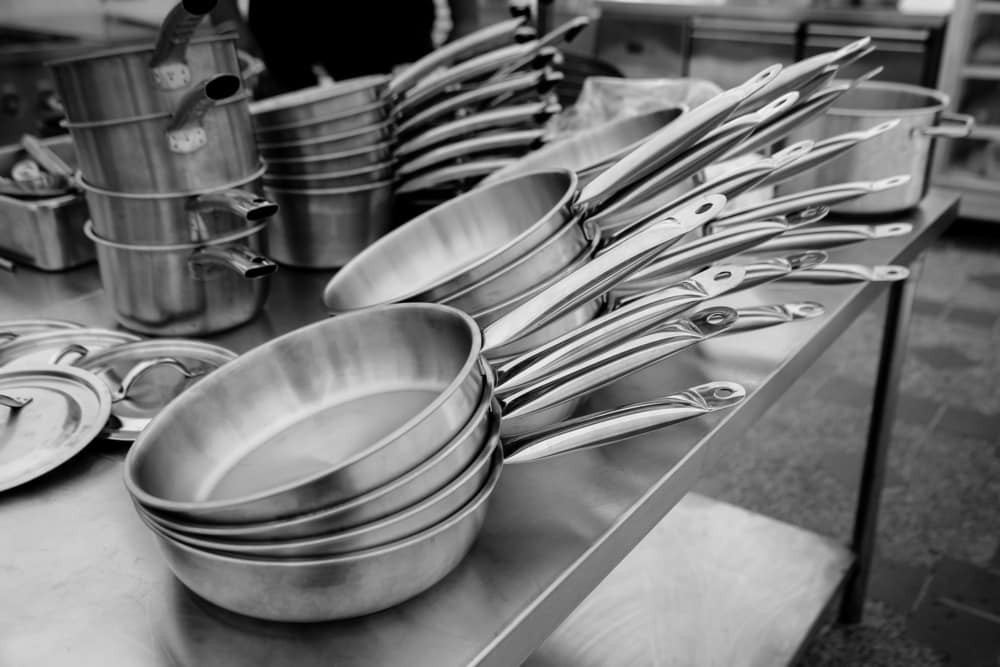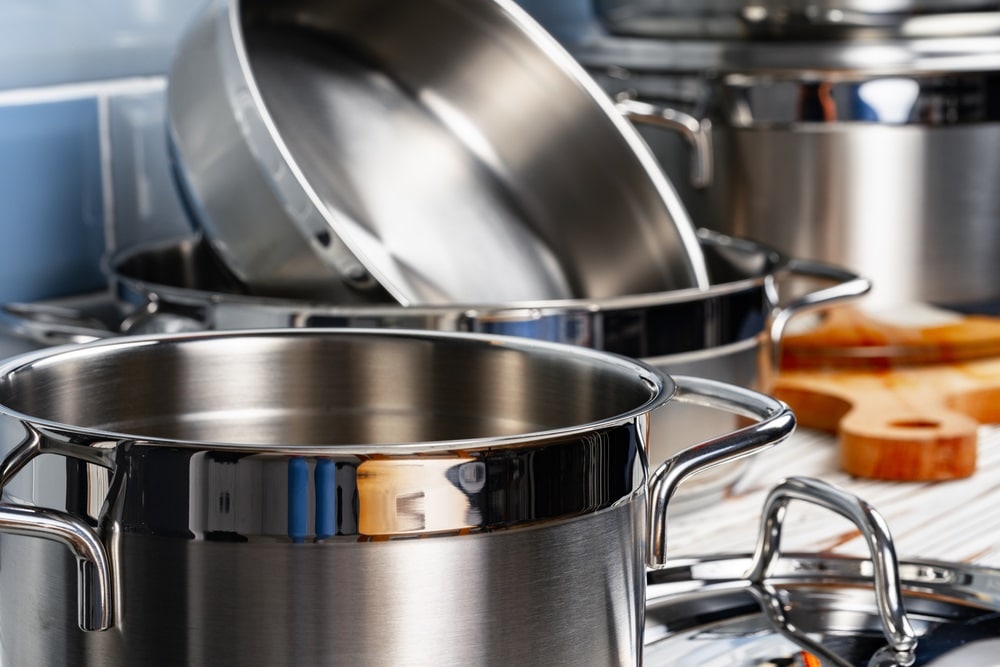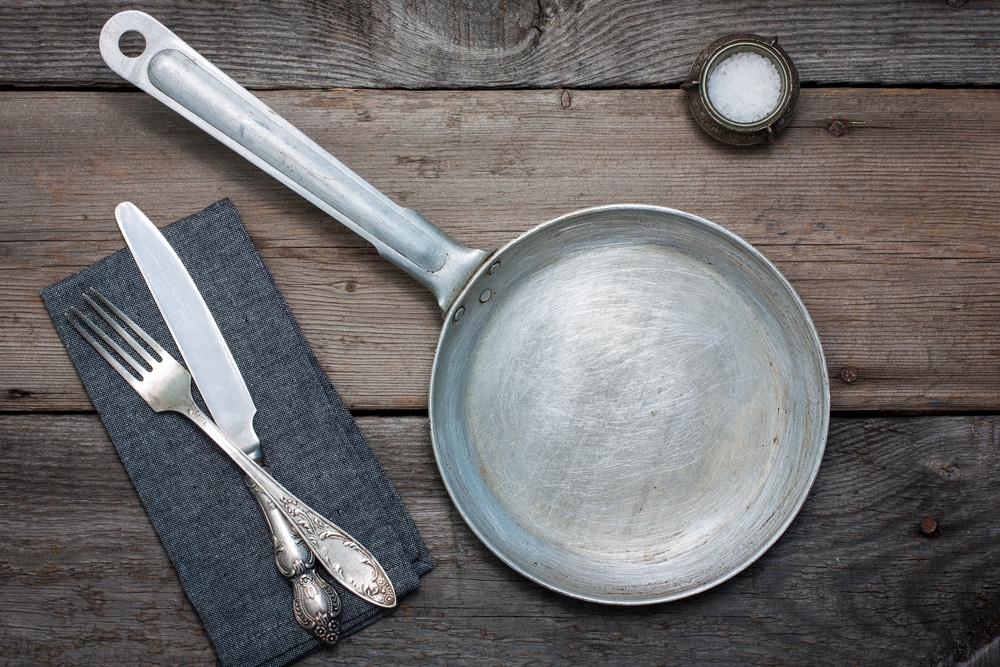
Aluminum cookware is probably the most common cookware that is used in both households and restaurants today.
The main reasons are that it is the most cost-effective cookware material available and that it heats up quickly when put onto the heat which makes it easier and quicker for people to prepare their dishes.
However, one has to be aware of the few problems that can occur when using this cookware and decide which is more suitable to use in your circumstance, either aluminum or stainless steel cookware.
One of the best types of cookware that you can use is made from stainless steel.
This is more durable and efficient when compared to most other products, and even though the price may be higher, it should be noted that it is often worth it to purchase the higher-priced item.
How to Tell Aluminum from Stainless Steel Cookware
People often ask the question of how to differentiate between aluminum and stainless steel cookware. Here are a few thoughts on this one.
- Sound
Aluminum cookware sounds duller and has less of a ring when tapped than stainless steel. You can check this by gently rapping your knuckles on the edge of the pot or by banging it with a wooden spoon.
- Temperature
At room temperature, aluminum feels slightly warmer than stainless steel.
- Shine
Aluminum tends to dull slightly after being washed whereas stainless steel usually remains shiny and bright.
- Hardness
The scratch test is another way to see if the cookware is aluminum or stainless steel. Take a sharp object such as a kitchen knife and gently scratch the surface of the cookware in an inconspicuous place.
Aluminum scratches fairly easily but stainless steel is very hardy. If you don’t want to scratch the cookware, using a magnet is probably is a better option. In most cases, a magnet will stick to stainless steel but not aluminum.
- Stain-free
Please also note that stainless steel (as its name says), does not usually stain during the cooking process so this is an easy check to see which cookware it is.
- Read
Lastly, you could simply just check the packaging that the product came in. There is likely some kind of indication regarding what material your cookware is made from. All you have to do is check the tag, packaging, or website.
Advantages Of Using Aluminum Cookware
Aluminum is a very good heat conductor and therefore heats up quickly, making it quicker and easier for people to prepare their dishes. It is relatively light to handle as it is a soft material.
It is also rust-free and fire-resistant (it can be put into the oven) and is easy to clean.
Disadvantages Of Using Aluminum Cookware
Aluminum is easily scratched or dented as it is a soft material. Don’t use steel scourers to clean the cookware! It can sometimes become discolored if put into the dishwasher to be cleaned due to the chemicals used.
Aluminum reacts to acidic foods such as tomatoes and vinegar and the cookware may become discolored and pitted. It may sometimes give a metallic taste to the food being cooked.
Advantages Of Using Stainless Steel Cookware
Stainless steel cookware always looks shiny, bright, and polished (as its name suggests) and it makes the kitchen look attractive and modern. It is highly durable and some forms of stainless steel are almost indestructible.
It is quick and easy to clean and requires very little maintenance. It is a safe option in the kitchen, whether in a restaurant or at home.
Disadvantages Of Stainless Steel Cookware
Stainless steel is not non-stick and it is, therefore harder to clean than other cookware. It is also a poor conductor of heat unless it has a copper or aluminum layer and therefore heats up slowly.
One cannot use it in the microwave or on a grill.
To Conclude
We hope that this article has helped you to decide which cookware you should use in your kitchen and how you can easily distinguish between aluminum and stainless steel cookware.

